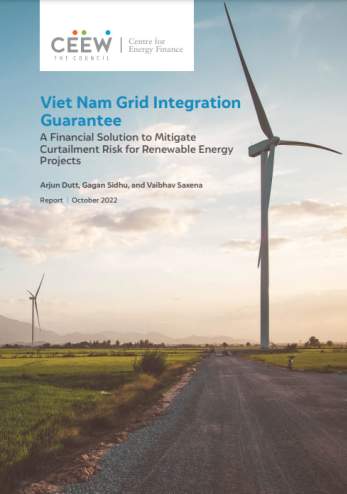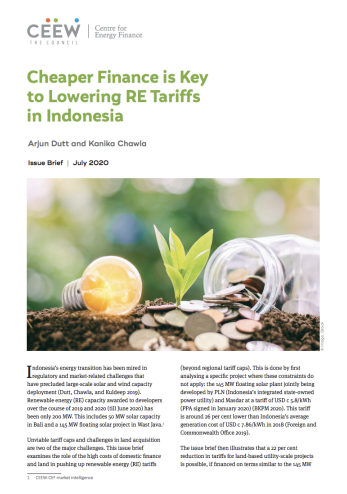Report
Reach for the Sun
The Emerging Market Electricity Leapfrog
Kingsmill Bond, Arunabha Ghosh, Ed Vaughan, Harry Benham
July 2021 | Emerging Economies, Energy Transitions
Suggested citation: Bond, Kingsmill, Arunabha Ghosh, Ed Vaughan, and Harry Benham. 2021. Reach for the sun: The emerging market electricity leapfrog. A Carbon Tracker-CEEW report. London: Carbon Tracker.
Overview
This study provides an overview of the emerging market electricity leapfrog. It demonstrates that emerging markets will not follow the same path to renewables as the developed markets. The study discusses how the developing countries are about to leapfrog fossil fuels in this decade to generate all the growth in their electricity supply from renewables. It focuses on types of leapfrog, the different groups of emerging markets, how advanced the leapfrog is, the forces driving the leapfrog as well as the various barriers to change.
Key Findings
- About 88 per cent of the growth in electricity demand between 2019 and 2040 is expected to come from the emerging markets. If they do not leapfrog to renewables, there will be no global energy transition.
- Many countries have already leapfrogged. The demand for fossil fuels for electricity generation in developed markets peaked in 2007, and is down 20 per cent since then; 99 per cent of developed markets have already seen a peak.
- India’s double leapfrog — connecting nearly all households to electricity and its renewable energy rollout — is one of the most revolutionary in scale.
- In emerging markets except China, fossil fuel demand for electricity has already peaked in countries accounting for 63 per cent of total demand. Even in 2019, 87 per cent of the growth in electricity supply came from non-fossil sources. China is likely to peak before 2025.
- Developing economies have massive renewable flows, 140 times greater than their energy demand. The move to renewables will save millions of lives lost to fossil fuel pollutants, reduce energy dependency for the 80 per cent of people living in fossil fuel importing countries and drive local job creation.
- Global drivers can speed up the shift to renewables. Leaders of the countries with over 75 per cent of global GDP have pledged to get to net-zero by mid-century; competition between China and the US favours a rapid dissemination of renewable technologies; and capital markets are increasing the cost of fossil capital relative to renewables capital. Expect more global technical, financial and policy support.
Key Recommendations
- Developed market policymakers need to identify those countries where the political economy favours a leapfrog, transfer policy and technology expertise and help reduce the cost of capital.
- Ensure the critical financial support needed to drive down prices of storage technologies and cover for current gaps between renewables-plus-storage versus coal. Without such support, either the pace of the energy transition would be slower or many energy poor people would be trapped at low levels of energy consumption. Neither is morally acceptable.
The emerging markets are key to the global transition. 88% of the growth in electricity demand between 2019 and 2040 is expected to come from the emerging markets. If they do not leapfrog to renewables, there will be no global energy transition.





